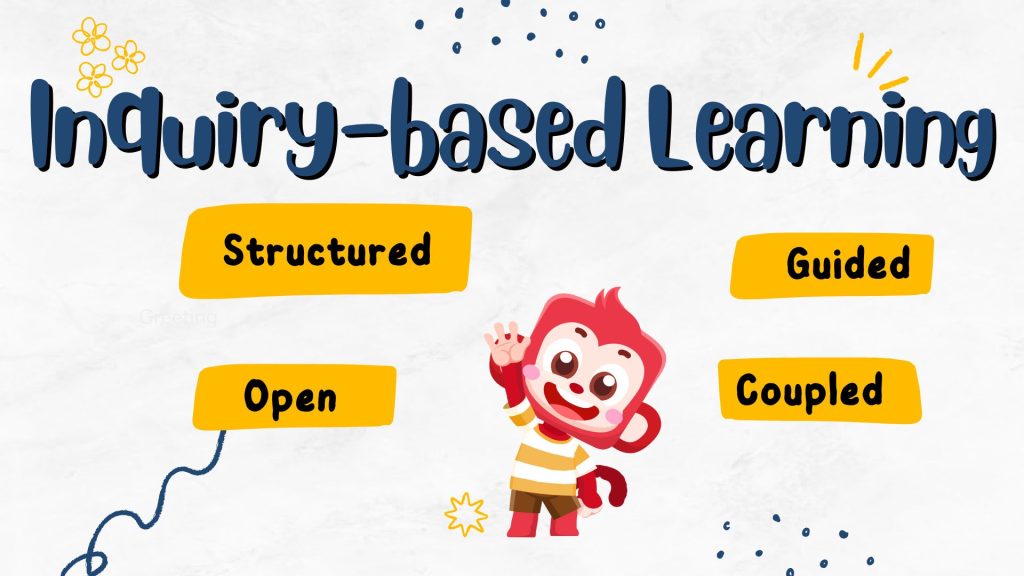Are you looking for a teaching method that can build your child’s confidence and his/her problem-solving ability? Do you want your child to be able to answer questions while also putting the knowledge into real-world application? Inquiry-based learning is what you are looking for. This article will discuss the types, benefits and different strategies of inquiry-based learning.

What Is Inquiry-based Learning?
Inquiry-based learning is something that we all experience throughout our lives. Growing up, children constantly ask questions and attend to make sense of the world. We all want to understand the world around us or try to figure out how it works. We do this by asking questions, for example, how engines are able to make cars move. During this process, we are continuously thinking in order to make meaning.
Inquiry-based learning stems from John Dewey’s constructive theory, which states that people construct their own understanding and knowledge of the world by experiencing things and then reflecting on those experiences. In other words, inquiry-based learning is a teaching method that centers students’ learning. It encourages students to ask questions and solve real-world problems. In this type of learning, students actively engage in exploring their interests and natural curiosities.
How Is This Different To What We Are Used To?
Many of us are growing up learning through traditional methods. In this approach, teachers pass information from the textbook to students in a step-by-step process. Success is then measured in the student’s ability to recite this information and focus on producing one correct answer. Inquiry-based learning is more dynamic than this as it actively involves students in their own learning. Children learn best through asking questions, investigating, gathering information, discussing theories and experiences, and reflecting on new knowledge.

What Is The Teacher’s Role?
In an inquiry-based approach, the teacher acts as a facilitator of the student’s learning rather than a provider of information. In addition to having an excellent understanding of the content, the teacher also needs to carefully plan their learning units. This planning will either involve the teacher developing an open-ended question or devising a topic based on the curriculum to let the students determine their own questions. It will also involve developing exploration-type activities that activate prior knowledge and engage students.

How Is A Typical Class Conducted?
Typically, the lesson will start with an open-ended question devised by the teacher or students or sometimes both. Through the use of carefully planned activities, the teacher will then encourage students to discuss the question and search for their own answers. It is during this process that students gather resources, do their own research and synthesize the information, and then present and share their findings with other students. Finally, the students will need to be given the opportunity to reflect on their learning. Through this process, students will build their own knowledge through exploration and deepen their understanding of certain concepts through reflection.
Levels of Inquiry-based Learning

The Structured Inquiry Approach
This approach is teacher-directed. The teacher provides a question to be investigated and then provides step-by-step guidance that will help the students discover the answers. These kinds of inquiries are important because they enable students to develop their ability to conduct more open-ended inquiries. It is also a good starting point for teachers who are new to inquiry-based learning.
The Guided Inquiry Approach
In the guided inquiry approach, the teacher generally chooses questions, and the students take more responsibility for establishing the direction and methods of their inquiry. The teacher plays an important role in guiding inquiry. This could be seen through feedback or posing further questions that help lead the students in the right direction.
The Open Inquiry Approach
In an open inquiry, the students take the lead in establishing the question and methods while the teacher provides the necessary resources. The students are given the freedom to explore on their own by letting them ask questions that guide their own investigations. Students will be able to develop their higher-order thinking through this approach.
The Coupled Inquiry Approach
If the teacher uses two types of inquiry in a lesson, it is called coupled inquiry. For example, the teacher could use the guided inquiry phase and then an open inquiry phase. The teacher can use different types of inquiry approaches and vary the learning experiences according to the needs of students.
How Can It Help Your Child to Excel in Math?
Encourages Critical Thinking
Inquiry-based learning encourages students to think critically about the information they are presented with. Students are encouraged to question the information and develop their own solutions, fostering the development of critical-thinking skills.
Improves Problem-solving Skills
Inquiry-based learning helps students develop problem-solving skills. When they are given the opportunity to explore real-world problems, they are forced to think outside the box and come up with their own solutions. This is an important skill that will help them in their future careers.
Encourages Creativity
When students are given the opportunity to explore a problem independently, they often come up with creative solutions. This approach is designed to let students think independently and creatively.
Improves Communication Skills
It also helps students improve their communication skills. When working on a problem, students often have to explain their thoughts and ideas to others, which helps them learn how to communicate effectively with others.
Connects Learning to the Real World
Inquiry-based learning helps students connect their learning to the real world. By allowing students to explore real-world problems, they can understand the relevance of what they are learning in the classroom. This approach also contributes to their better understanding of the material.
Helps Students Understanding
Inquiry-based learning can also help students understand complex topics. When they are allowed to explore these topics in a hands-on environment, they can learn about them more meaningfully.
Encourages Engaged Learning
Finally, this type of learning encourages engaged learning. When students are actively involved in the learning process, they are more likely to retain the information because they are invested in what they are doing.

Choose A Courses Product That Integrates The Inquiry-Based Learning Approach
Spark Math offers a variety of courses designed to help your child excel in math. Our teachers employ effective and engaging teaching strategies, including inquiry-based learning, to enhance students’ critical thinking and problem-solving abilities. These methods encourage students to explore mathematical concepts deeply, ask questions, and discover solutions on their own, fostering a deeper understanding and a lasting interest in the subject.
At Spark Math, we believe that every student has the potential to excel in math, and we are dedicated to making that potential a reality. Join us to give your child the tools they need to succeed and build confidence in their mathematical abilities.




